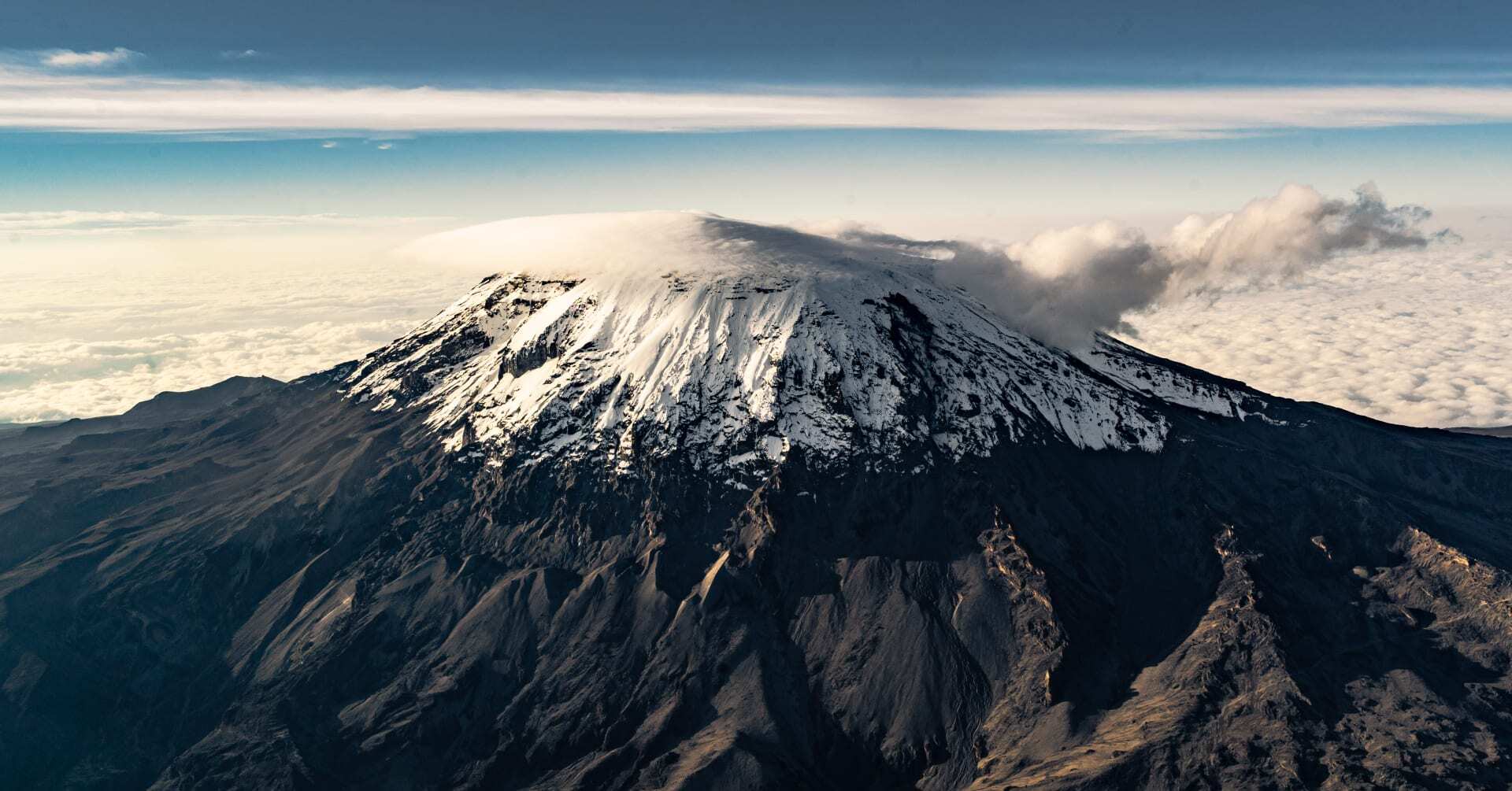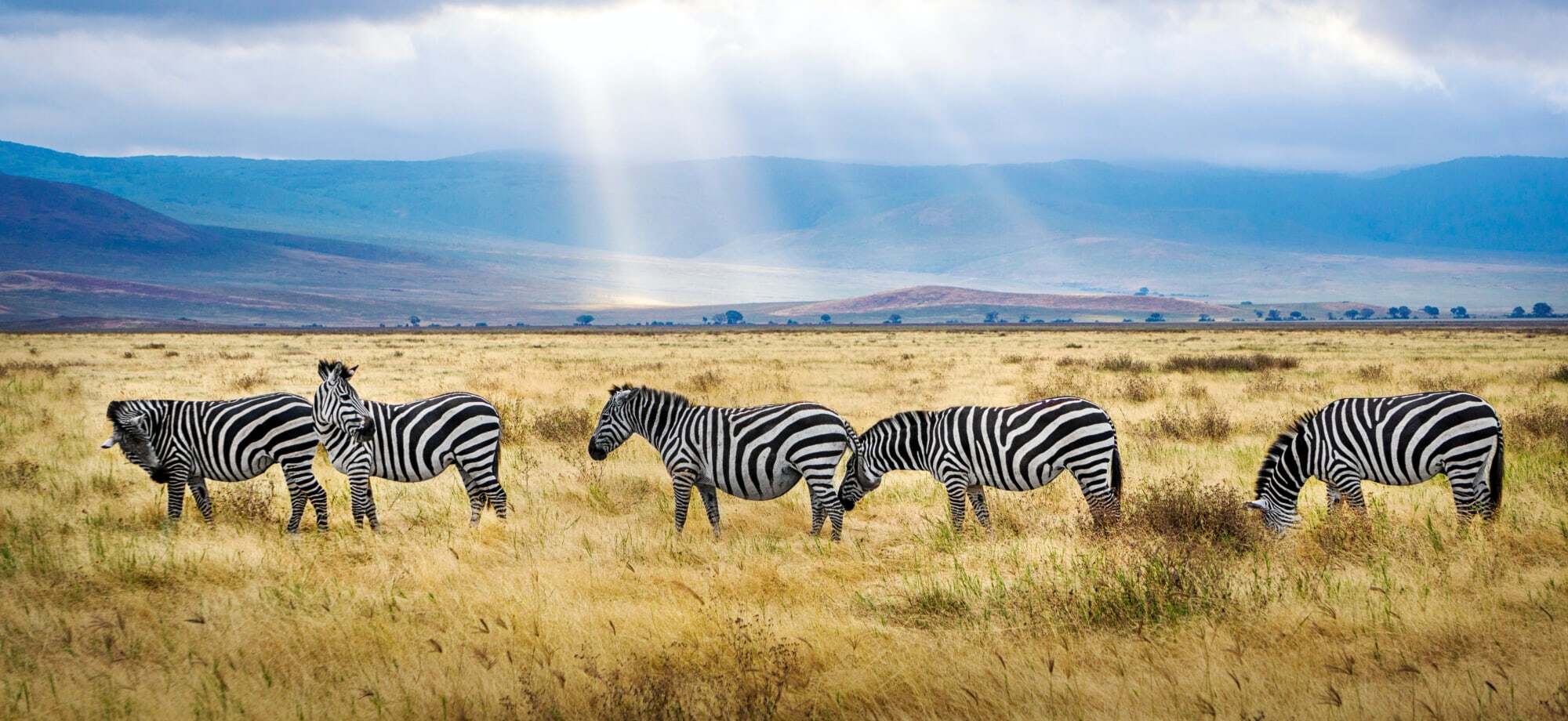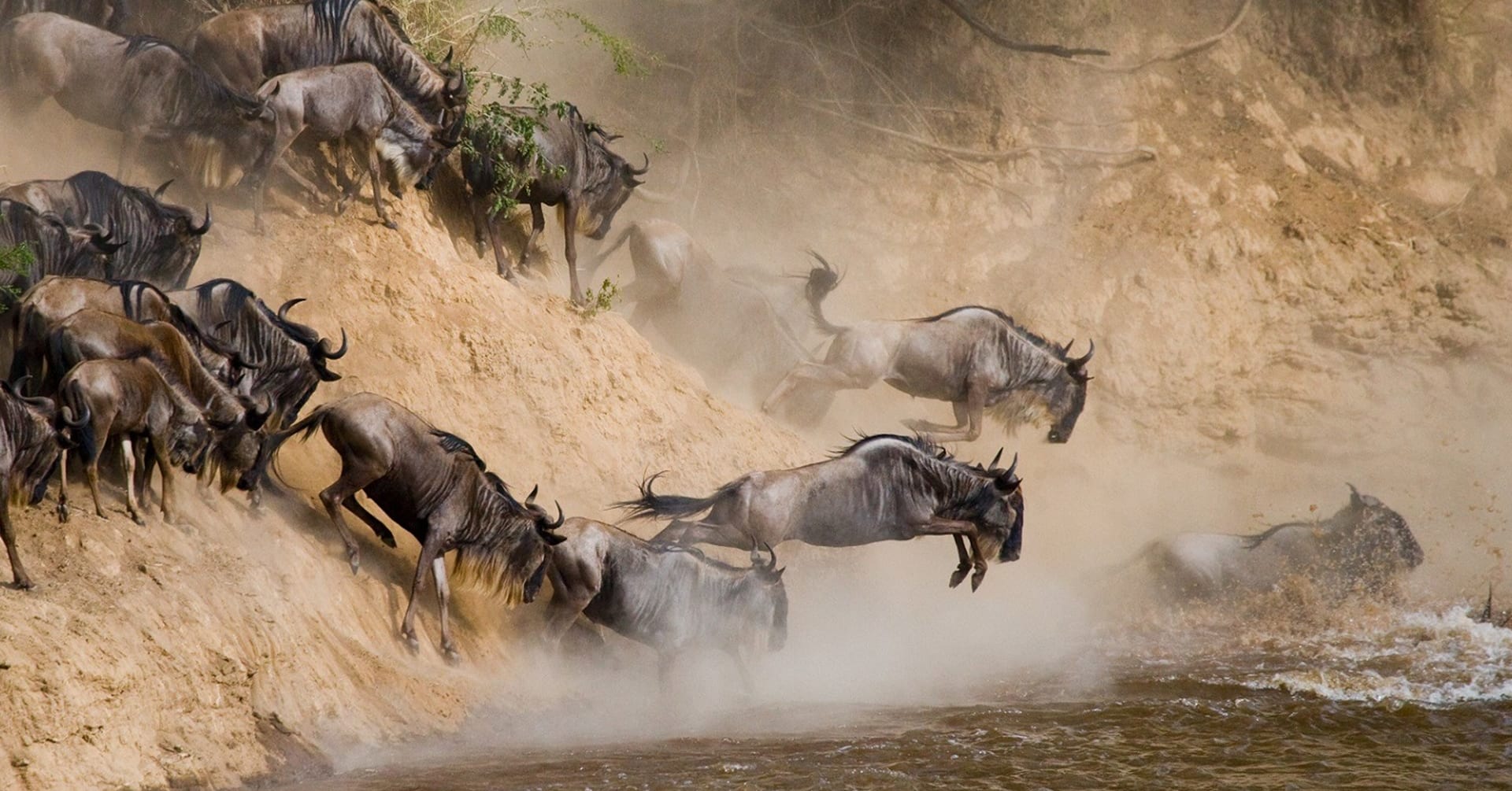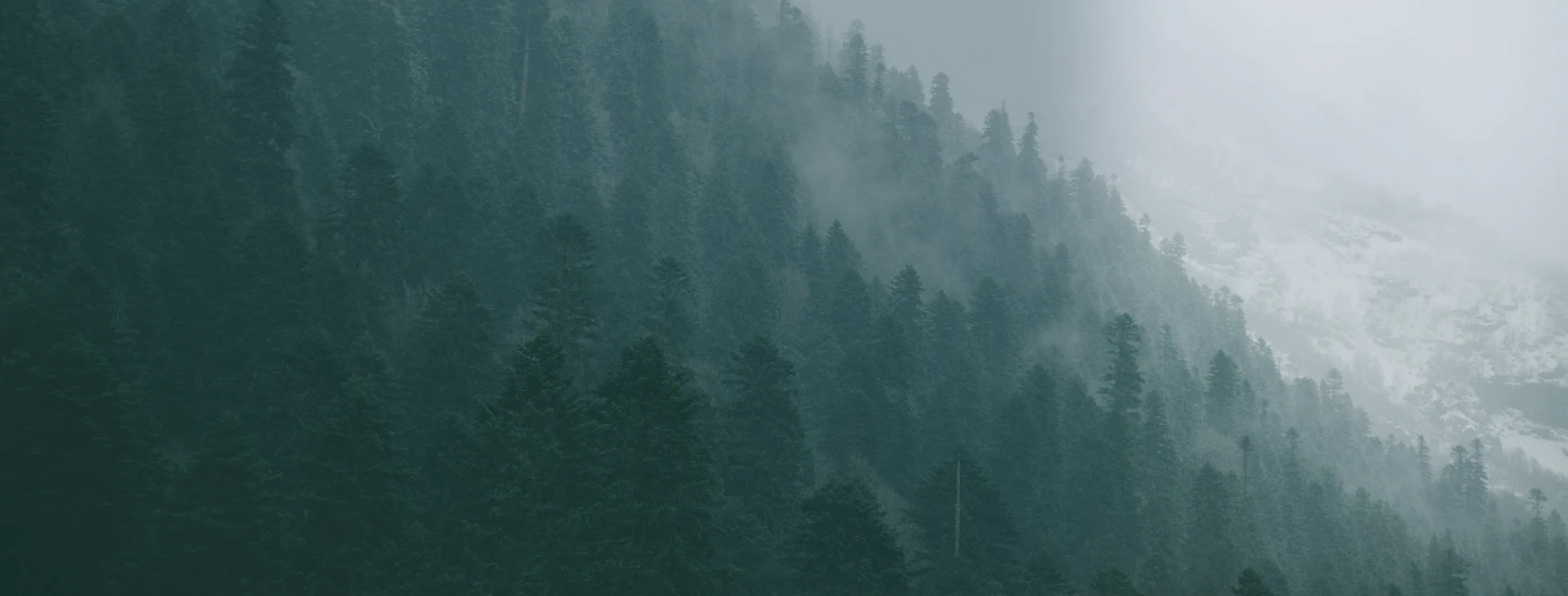Discover 7 of the best wildlife parks and reserves in Tanzania, including when to visit and where to stay
A safari is one of Africa’s greatest wildlife adventures and Tanzania is one of the best countries to experience a walk on the wild side.
It’s an iconic safari destination, home to all of Africa’s ‘Big Five’, scores of rare and endangered species, and the Great Migration, renowned as the greatest show on earth.
With 38% of its land reserved as protected wildlife areas, Tanzania offers a wide choice of national parks and game reserves, all designed for different interests and travel preferences.
Before you head off on your luxury safari holiday in Tanzania, you’ll need to know which parks and reserves are best suited to you.
There are two main ‘safari circuits’ - the popular Northern Circuit boasts the stars of Tanzania including the Serengeti and Ngorongoro Crater, while the quieter Southern Circuit offers a remote wilderness experience away from the crowds.
To help you plan your safari holiday, we’ve put together a comprehensive guide to seven of our favourite national parks and game reserves in Tanzania, including the top highlights, the best time to visit, how to get there, and where to stay in each destination.
Looking for travel inspiration? Wayfairer trip ideas that will take you to Tanzania Parks & Game reserves:
Northern Parks
1. Serengeti National Park
As Tanzania’s largest and most iconic national park, the Serengeti National Park is one of the best places in Africa for wildlife viewing. It’s one of the Seven Natural Wonders of Africa, and a bucket list destination for many travellers and safari enthusiasts.
Located in northern Tanzania, the Serengeti is one of the most complex ecosystems on the planet, stretching to the Masai Mara in Kenya to form the mighty Mara-Serengeti ecosystem. The climate, plants and animals of this region have barely changed over the past one million years, making it also one of the oldest and least disturbed ecosystems on earth.
The Serengeti National Park is also host to the world’s greatest wildlife spectacle - the Great Migration. Every year, beginning around July, over 1.5 million wildebeest, zebra and antelope move in a thundering mass from the Serengeti to the Masai Mara, in search of greener pastures.
When the rains set in around October or November, the massive herd makes the 1,000km return journey back to Tanzania. From December to April, more than two million wildebeest remain in the Serengeti.
Home to all of Africa’s Big Five, the Serengeti is a wildlife lover’s dream, with the chance to see elephants, lions, leopard, buffalo and rhinos, along with giraffes, zebra, cheetah, spotted hyenas and other favourites from The Lion King. It’s a haven for bird watchers, with over 500 species of bird.
You can spot all the classics, but possibly also some rarer species including the recently reintroduced African wild dog. This unique species had been extinct in the Serengeti since 1991, and is critically endangered throughout Africa.
The Serengeti is also a wildlife photographer’s paradise, renowned for its beautiful scenery. You’ll roam through grassland plains in the southeast, cross valleys, rivers and forests in the west, and climb the rocky, hilly northern section of the park.
Top highlights of the Serengeti:
One of the Seven Natural Wonders of Africa and a UNESCO World Heritage Site
- The annual Great Migration of more than 1.5 million wildebeest across the plains of the Serengeti to the Masai Mara.
- One of the best destinations in Africa to spot wildlife, home to all of Africa’s Big Five as well as rarer species.
- Hot air balloon safaris at dawn.
- Stunning, diverse geography and scenery.
- Some of Tanzania’s best luxury camps and lodges.
 Wilderbeest in the Serengeti National Park
Wilderbeest in the Serengeti National Park
Quick facts
Number of annual visitors: Approximately 400,000 Size: 14,750 km² Common Animal Sightings: Elephants, giraffe, all three African big cats (lions, leopards and cheetah), zebra, wildebeest, gazelle, buffalo, eland, spotted hyenas.
Best time to visit Serengeti National Park
The dry season (June to October) is the best and most popular time to visit the Serengeti, as vegetation thins out and wildlife gather around waterholes, making them easier to spot.
If you’d like to see the Great Migration, you can see the herds moving into the Western Corridor from May to July, however the main event of the Mara River crossing happens in July and August, and again in October or November, when the rainy season begins.
If you’d prefer to travel at a quieter time, visit the Serengeti from November to March, when the plains illuminate in lush, green vegetation and baby animals are born. This is also the best season for bird watching, however it is more difficult to spot big game in the dense foliage, and you’ll experience frequent afternoon downpours.
The heaviest rains fall in April and May, and some lodges and roads close due to flooding. Mosquitoes are also at their worst, so it’s best to avoid travel during these months.
How to get to Serengeti National Park
The easiest way to get to the Serengeti National Park is with a private vehicle transfer. You will most likely enter through the Naabi Hill Gate in the southeastern corner of the park, and the Serengeti is only a 2.5 hour drive from Ngorongoro Crater.
You can get there from Arusha, the safari capital of Tanzania, with an eight hour drive, or you can take a charter flight from Arusha Airport or Kilimanjaro International Airport to any of the Serengeti’s small airstrips.
Where to stay in Serengeti National Park
Our favourite luxury lodges and camps in Serengeti National Park:
1. Serengeti Serena Safari Lodge
 The rooms at Serengeti Serena Safari Lodge
The rooms at Serengeti Serena Safari Lodge
An award-winning lodge set in an elevated position with breathtaking views across the Serengeti grasslands, Serengeti Serena Safari Lodge is the ultimate safari lodge. Located just 27 km from the Seronera airstrip, you’ll arrive to a gorgeous infinity pool on the hillside where you can spot big game and migrating wildebeests. Indulge in a massage at the onsite spa, dine in the bush, or simply relax on your private balcony in your beautiful rondavel lodge.
2. Kati Kati Tented Camp
 Kati Kati Tented Camp
Kati Kati Tented Camp
Enjoy rustic camping with all the modern facilities at Kati Kati Tented Camp, a mobile camp set in central Serengeti. Located just a 40 minute drive from the nearest airstrip, you’ll enjoy delicious food in the charming mess tent, a cosy campfire to gather around at night, and lavish ensuite tents surrounded by the African wilderness.
3. Serengeti Pioneer Camp
 Serengeti Pioneer Camp
Serengeti Pioneer Camp
Set in the Moru Kopjes area of the South Central Serengeti, Serengeti Pioneer Camp is right in the heart of the action. You’ll have easy access to witness the Great Migration, panoramic views of Moru Kopjes, and the classic Big Five. With only twelve luxury tents, feauturing vintage furnishings and modern facilities, you’ll come home to comfort after a long day of adventure in the Serengeti.
2. Ngorongoro Conservation Area
Named as one of the Seven Natural Wonders of Africa, the Ngorongoro Conservation Area is one of the most extraordinary destinations on the continent. Located in the Crater Highlands of northern Tanzania, the conservation area is one of the country’s most famous safari hotspots, home to a remarkable abundance and diversity of wildlife.
It’s named after the mighty Ngorongoro Crater, an ancient volcanic crater spanning 260 square kilometres, surrounded by a 600 metre high crater wall. It’s the world’s largest intact and unfilled caldera, which alone is home to over 25,000 large game animals.
It’s also one of the few places in Africa where you can see all of the Big Five (elephant, lion, leopard, rhino and buffalo) in a single day, and the conservation area protects Tanzania’s last remaining population of the endangered black rhino.
You’ll have the chance to see spotted hyenas, slinking cheetah, the elusive leopard, large herds of buffalo and gazelle, and even the critically endangered African wild dog. Head to the glittering soda lakes, and you’ll spot hippos and huge pink flocks of flamingo.
If you arrive during the Great Migration, you’ll witness nearly two million wildebeest, zebra and antelope making their thundering mass movement to the Masai Mara in Kenya.
The conservation area has been home to human ancestors for around three million years, and has been occupied by pastoralist tribes, including the Maasai, for the past 2,000 years.
Since 1979, the Ngorongoro Conservation Area has been established as both a wildlife sanctuary and a UNESCO World Heritage Site, making it the only conservation area in the country that allows the cohabitation of humans with protected wildlife.
You can visit the Maasai cultural village, and also Olduvai Gorge, where the discovery of fossilized footprints was made, proving that humans were walking on two legs at least 3,7 million years ago. As one of the most important discoveries in history, which changed our understanding of human evolution, this is an incredible site to witness, and you can see casts of the footprints at Olduvai Gorge Museum.
 Go to see Rhino in the Ngorongoro Conservation Area
Go to see Rhino in the Ngorongoro Conservation Area
Top highlights
- One of the Seven Natural Wonders of Africa and a UNESCO World Heritage Site.
- See the resident population of the endangered black rhino.
- One of the few places where you can see all of Africa’s Big Five in a single day.
- Incredible wildlife viewing all year round.
- One of the most unique safari destinations with a stunning natural backdrop.
- Discover the local Maasai culture and the ancient hominid fossils of Olduvai Gorge.
- Luxurious accommodation in an unparalleled setting.
Quick facts
Number of annual visitors: Approximately 700,000 Size: 8,292 km² Common Animal Sightings: Black rhino, all three big cats (lion, leopard and cheetah), wildebeest, zebra, flamingo, hippos, elephants, buffalo, spotted hyena, gazelle.
Best time to visit Ngorongoro Conservation Area
The Ngorongoro Conservation Area can be visited all year round, with two distinct seasons offering unique treasures.
The dry winter season (June to August) is the best time for wildlife viewing, while the rainy summer season (November to April) is less crowded with tourists and the best time for bird watching. You’ll see greater populations of the famous pink flamingos when the water levels of the soda lakes are higher.
If you’d like to witness the Great Migration in the Ngorongoro region, travel between December and March.
How to get to Ngorongoro Conservation Area
The Ngorongoro Conservation Area can be easily accessed with a 2.5 hour private vehicle transfer from the Serengeti National Park, or from Arusha, the country’s safari capital.
You’ll most likely fly into Julius Nyerere International Airport (DAR) in Dar es Salaam, then take a domestic flight to Arusha Airport (ARK). From there, you can take a three-hour private vehicle transfer to the conservation area.
Where to stay in Ngorongoro Conservation Area
Our favourite luxury lodge in the Ngorongoro Conservation Area:
1. Ngorongoro Crater Lodge
 Take in the spectacular views from Ngrongoro Crater Lodge
Take in the spectacular views from Ngrongoro Crater Lodge
Set in a unique elevated position on the southwestern rim of the Ngorongoro Crater, at an altitude of 2,375 metres, Ngorongoro Crater Lodge is one of Africa’s most magical properties. You’ll stay in opulent thatched houses with spectacular views over the region, featuring romantic private dining, attentive personal butlers, a private fireplace, electric blankets and rose petal bubble baths.
3. Tarangire National Park
Get off the main safari circuit and head to the quieter TaraTarangire National Parkngire National Park, renowned for its incredibly concentrations of wildlife, and stunning natural scenery. Located in the Manyara region of northern Tanzania, less than two hours from Arusha, Tarangire National Park is often a surprising favourite for travellers. Many people either skip Tarangire altogether, or only visit the park for a quick morning or afternoon game drive, however we recommend staying for at least two days to take full advantage of this fantastic destination.
During the dry season (June to October), the Tarangire River becomes the only water source for scores of animals, drawing large herds of elephants (sometimes up to 300 strong), zebra, giraffe, impala, eland and warthog there to drink.
Predators, including lions and spotted hyena, gather around the river ready to strike, while leopards, cheetahs and even tree-climbing lions, can also be found in certain areas of the park. African wild dogs have been sighted in the park, although it is rare to spot them.
As one of Tanzania’s best birding destinations, you’ll have the chance to spot over 550 species, including the ashy starling, northern pied babbler, bushveld pipit and yellow-collared lovebird.
Tarangire is also famed for its breathtaking landscapes, with ancient baobab trees, acacia woodlands, and massive termite mounds (home to dwarf mongoose), dotting the plains.
 Tarangire National Park
Tarangire National Park
Top highlights
- One of the biggest elephant populations in northern Tanzania.
- Highly concentrated wildlife viewing during the dry season.
- Excellent birdwatching opportunities.
- Night safaris and walking safaris available.
- Unique luxury lodges and camps.
- Spectacular scenery famed for its ancient baobab trees
Quick facts
Number of Annual Visitors: Approximately 160,000 Size: 2,850 km² Common Animal Sightings: Elephants, giraffe, big cats (lion, leopard, cheetah), wildebeest, waterbuck, eland, gazelle, buffalo, impala, hartebeest.
Best time to visit Tarangire National Park
The best time visit Tarangire National Park is during the dry season from June to October, when the wildlife are at their most concentrated. As vegetation thins and animals gather around the Tarangire River, the only remaining water source, you’ll have incredible wildlife viewing opportunities.
The dry season also coincides with the Great Migration, so you can head to the nearby Serengeti to cross this phenomenal event off your bucket list.
The wet season (November to December and March to May) is the best time for birders, as the summer migrant birds arrive and other species show off their bright breeding plumage. However, most of the big game have disappeared and you’ll contend with heavy downpours and rampant mosquitoes.
How to get to Tarangire National Park
Tarangire National Park can be easily accessed with a private vehicle transfer. It’s a 4.5 hour drive from the Ngorongoro Conservation Area, a seven-hour drive from Serengeti National Park, a four-hour drive from Kilimanjaro International Airport (KIA), or a three-hour drive from Arusha, the country’s safari gateway.
You can also take a flight to the Kuro airstrip, located in the southern section of Tarangire National Park.
Where to stay in Tarangire National Park
Our favourite luxury lodges and camps in Tarangire National Park:
1. Tarangire Treetops Tarangire Treetops bedroom
Tarangire Treetops bedroom
Built around a spectacular thousand year old baobab tree, Tarangire Treetops inspires a sense of romance and adventure in the African wilderness. Located just a three-hour game drive from Kuro airstrip, or a four-hour drive from Kilimanjaro airport, you’ll arrive to some of the largest rooms in the country, with cosy furnishings and modern amenities. The unique rooms are elevated in the treetops, with panoramic views of the stunning landscape and wildlife.
2. Tarangire River Camp
 Tarangirer River Camp firepit
Tarangirer River Camp firepit
Set in a 25,000-hectare concession area overlooking a branch of the Tarangire River, just 3.5km from the park’s main entrance, Tarangire River Camp offers incredible access to one of the greatest wildlife concentrations in Tanzania. You’ll watch herds of elephants digging into the dry riverbed, predators stalking their prey, and dozens of bird species flitting around the ancient baobab trees, all from the comfort of the elevated platform of your luxurious safari tent.
4. Lake Manyara National Park
Located between Tarangire National Park and Ngorongoro Crater, Lake Manyara National Park is an easy addition to a Northern Circuit safari.
However, it’s well worth a visit in its own right, renowned for its unique ecosystems bursting with diverse wildlife. This pocket-sized version of the Serengeti is host to at least 11 different ecosystems, with groundwater forests, floodplains, hot springs and open savannahs.
The majority of the park is covered in Lake Manyara, a beautiful soda lake which attracts hippos, pink flamingos and more than 300 other migratory birds.
Lake Manyara National Park also boasts one of the world’s highest concentrations of large mammals. You’ll likely spot huge herds of elephants and the famous tree-climbing lions, along with great populations of wildebeest, zebra, buffalo, giraffe, warthog, impala and waterbuck.
If you’re keen to spot some primates, keep your eyes peeled for the resident baboon, vervet monkey, common monkey and nocturnal bushbabies. The park is also home to leopards and hyenas, although they are more difficult to spot.
Bordered by the Great Rift Valley in the west, and set beneath the cliffs of the Manyara Escarpment, Lake Manyara is part of the Lake Manyara Biosphere Reserve, making it one of the best protected areas for wildlife in Tanzania.
 Flamingoes at Lake Manyara
Flamingoes at Lake Manyara
Top highlights
- Incredible tree-climbing lions.
- Huge herds of elephants.
- Highly concentrated wildlife in a relatively small park.
- Excellent birdwatching.
- Unique and beautiful natural scenery.
- Night safaris and hiking available.
Quick facts
Number of Annual Visitors: Approximately 180,000 Size: 325 km2 Common Animal Sightings: Elephants, hippo, flamingo, lion, wildebeest, buffalo, giraffe, impala, waterbuck, zebra, warthog, zebra, baboon, monkeys.
Best time to visit Lake Manyara National Park
Lake Manyara National Park can be visited all year round, with something special to see in every season. If you’d like to see the park’s abundant big game, visit during the dry winter season from June to October, when wildlife viewing is at its best, and you can also witness the Great Migration in the surrounding northern parks.
If you’d like to see the park’s birdlife and pink flamingos, visit between November and April, when migrant species arrive and resident birds display their colourful breeding plumage. The lake is also at its prime during this season, with lush green foliage dotted with bright pink flamingos.
How to get to Lake Manyara National Park
Lake Manyara National Park is the ideal addition to your Northern Circuit itinerary in Tanzania, as it’s only a three-hour drive from Ngorongoro Conservation Area or Tarangire National Park, and a five-hour drive from Serengeti National Park.
You can also reach Lake Manyara in just two hours from Arusha, or fly from Arusha Airport to Lake Manyara Airport (LKY). Flights take 30 minutes and you will be met on arrival by a representative for your transfer to your lodge.
Where to stay in Lake Manyara National Park
Our favourite luxury lodges and camps in Lake Manyara National Park:
1. Lake Manyara Serena Safari Lodge
 Lake Manyara Serena Safari Lodge
Lake Manyara Serena Safari Lodge
Set in a spectacular location close to Lake Manyara, with a stunning backdrop of Mto wa Mbu escarpment, Lake Manyara Serena Safari Lodge is an exceptional luxury lodge. With spacious rooms, gorgeous manicured gardens, and an infinity pool with phenomenal views over the valley and lake below, the lodge is the perfect place to relax after a day on safari. With a massive range of activities on offer, from night game drives and canoeing, to bike rides and village visits, you’ll have an enriching stay in Lake Manyara.
2. Manyara Ranch Conservancy
Manyara Ranch Conservancy
Set within the Kwakuchinja wildlife migration corridor, on a private conservancy of 35,000 acres of unspoilt wilderness, Manyara Ranch Conservancy lies completely undisturbed. No other safari operator has access to this area, and with just eight eco-friendly canvas tents, you’ll relish the tranquility. The conservancy is also the first project in Tanzania to combine conservation with tourism, and your stay will directly contribute to the welfare of the local communities. Go on night game drives, watch wildlife at the watering hole from one of the custom built hides, or learn about the local culture on a village walk.
5. Arusha National Park
Most travellers pass through Arusha on their way to the more famous national parks of the Northern Circuit, however we recommend staying for a few days to soak up the fantastic sights around the region. Located just outside Arusha, Arusha National Park is a small, yet rich in wildlife, and can be accessed with an easy day trip from the city centre.
It’s one of the country’s most exciting parks, with plenty of activities such as game drive, canoe safaris and bush camping. Due to the lack of predators in the park, it’s also one of the few places where you can venture out on a walking safari.
Although there are no lions or rhinos, and rarely seen cheetah, leopard and hyena, visitors will be treated to one of the country’s largest populations of giraffe, along with populations of buffalo, zebra, waterbuck, bushbuck and other species of antelope.
If you’re lucky, you’ll catch a glimpse of the handful of elephants, hippos and shy dik-diks and red forest duikers which roam the region. There is also a population of primates in the Ngurdoto Forest, including blue monkeys and black-and-white colobus monkeys.
Birdwatchers will entertained, with over 400 different bird species found in the park, including the bright pink flocks of flamingos that cover the Momella Lakes. With open grassland, dense forest, glittering lakes and the Ngurdoto Crater (known as Little Ngorongoro), Arusha National Park is scenically stunning.
If you’re looking more adventure, consider climbing nearby Mount Meru, Tanzania’s second highest mountain, or conquer Mount Kilimanjaro, the highest peak in Africa.
 Elephants in Arusha National Park
Elephants in Arusha National Park
Top highlights
- Excellent populations of giraffes and primates.
- Prime destination for birdwatching.
- Walking safaris, canoe safaris and bush camping is available.
- Climb Mount Meru, Tanzania’s second highest peak, or Mount Kilimanjaro, the highest peak on the continent and one of the Seven Natural Wonders of Africa
- Easily accessible and close to the other major parks in the Northern Circuit.
Quick facts
Number of Annual Visitors: Approximately 67,000 Size: 552 km² Common Animal Sightings: Giraffe, buffalo, waterbuck, zebra, warthog, dik-dik, blue monkey, black-and-white colobus monkey, flamingo.
Best time to visit Arusha National Park
Similar to the other parks in Tanzania, the best time to visit Arusha National Park is during the dry winter season from July to October. Vegetation is more sparse and animals gather around retreating water sources, so wildlife is easier to spot.
This is also the best season to climb Mount Kilimanjaro, Mount Meru and to see the Great Migration across the Serengeti.
The wet season of December to June is best for bird watching, spotting newborn animals, and photographing the beautiful lush green landscapes. The peak of the wet season (March to May) experiences the heaviest rains.
How to get to Arusha National Park
As the safari gateway of Tanzania, Arusha is easily accessible. You can fly into Julius Nyerere International Airport (DAR) in Dar es Salaam, then take a domestic flight to Arusha Airport (ARK). From there, it’s a 1.5 hour drive to Arusha National Park. You’ll also be within driving distance of the other major national parks on the Northern Circuit.
Where to stay in Arusha National Park
Our favourite luxury lodges and camps in Arusha National Park:
1. Arusha Serena Hotel
 Arusha Serena Hotel
Arusha Serena Hotel
Situated next to Lake Duluti, surrounded by the woodland slopes of Mount Meru, Arusha Serena Hotel is a gorgeous, peaceful property. With charming cottage style rooms, landscaped lawns, and a 1920s lakeside resort feel, the hotel is perfect for soaking up the natural beauty of the region. There’s also plenty to do, with massage treatments, lakeside sundowners, canoe safaris, city tours, local market visits and cooking classes.
2. Arusha Coffee Lodge
 Arusha Coffee Lodge
Arusha Coffee Lodge
Located just five minutes from Arusha Airport, you’ll be set in the beautiful foothills of Mount Meru at Arusha Coffee Lodge. Surrounded by history, the lodge is set on one of Tanzania’s largest coffee plantations, and the charming guest houses are designed to reflect the style of the early 1900s. Soak up spectacular views of the evergreen fields, go on a coffee estate tour, or spend the day at the swimming pool and spa.
Southern Parks
6. Nyerere National Park (Selous Game Reserve)
The Nyerere National Park is Africa's largest game reserve, home to all of Africa’s Big Five and an extraordinary amount of wildlife, yet it remains largely unheard of by tourists.
Located in southern Tanzania, far from the crowds of the more popular parks in the Northern Circuit, visitors to the Selous will find a much quieter, yet just as impressive, safari experience.
Take a game drive around the reserve during the dry season, and you’re likely to spot some of the 120,000 buffaloes that inhabit the region, along with the 4,000 lions, one of the largest populations in the world.
You can see elephants, cheetah, leopard, crocodile, giraffe, zebra, impala, wildebeest, eland and hyena. You’ll even have a chance of spotting the critically endangered black rhino or the African wild dog, with around 50% of their remaining population found in the Selous.
The Rufiji River is the lifeline of the Selous, with a massive network of waterways serving as the major water source for thousands of animals.
Take a boat safari along the rivers and wetlands to spot some of the 40,000 resident hippos and the huge population of crocodiles. You can also explore the Selous on foot with an exhilarating walking safari, or go off road in your guided safari vehicle in search of the incredible wildlife.
 Nyerere National Park
Nyerere National Park
Top highlights
- Largest game reserve in Africa and a UNESCO World Heritage Site.
- One of the few destinations in Africa to see African wild dogs.
- Excellent lion population and sightings.
- Prime wildlife viewing during the dry season, without the crowds.
- Boat safaris available.
Quick facts
Number of Annual Visitors: Exact numbers are unknown, however less than 1% of Tanzania’s tourists visit this reserve. Size: Over 50,000 km² Common Animal Sightings: Lion, giraffe, hippo, crocodile, wildebeest, buffalo, zebra, elephant, eland, puku, hartebeest, kudu.
Best time to visit Selous Game Reserve
The best time to visit the Selous Game Reserve is during the dry season of July to October. Even though this is peak season, you still won’t encounter the usual crowds of the more popular northern parks. With thinning vegetation and retreating water sources, you’ll have prime wildlife viewing opportunities.
The wet season runs from October to May, and is best for birdwatching, spotting newborn animals, and photography around the lush, green scenery. However, the heaviest rains fall from March to May, and many lodges and roads close during this period.
How to get to Selous Game Reserve
The easiest way to reach the Selous is by flying into Julius Nyerere International Airport in Dar es Salaam, then transferring to the nearby domestic airport for your flight to the Selous Game Reserve. On arrival, you’ll be met by a representative for your transfer to your lodge.
Where to stay in Selous Game Reserve
Our favourite luxury lodges and camps in the Selous Game Reserve:
1. Selous Serena Camp
 Selous Serena Camp bedroom
Selous Serena Camp bedroom
When you stay at Selous Serena Camp, you’ll enjoy Africa’s largest game reserve in supreme comfort. With luxurious safari tents, a spa tent with massage treatments, a gorgeous infinity pool, romantic sundowners by the river, boat safaris, bird walks and game drives, you’ll have the perfect mix of adventure and tranquility. You can even watch elephants walking through the camp, as they make their way to the nearby Simbazi River.
2. Siwandu Camp

Siwandu Camp
Set in an open palm forest next to Lake Nzerakera, Siwandu Camp is in one of the most exciting areas of the Selous Game Reserve. You’ll enjoy safaris by vehicle, boat and foot, and you’ll also enjoy incredible views within the camp, with an elevated lounge and dining area, and spacious safari tents offering spectacular views of the lake. Located just a 5-minute drive from the airstrip, the camp is easily accessible, with an off-grid atmosphere.
7. Ruaha National Park
After merging with the Usangu Game Reserve in 2008, Ruaha National Park became the largest national park in Tanzania, host to massive wildlife populations. Despite this, Ruaha remains one of the country’s best kept safari secrets.
Located in southern Tanzania, the park is only accessible airplane. Wildly remote and bursting with wildlife - this is the ideal escape from the well beaten safari track.
Its beautiful landscapes are made up of vast open plains, rolling hills, ancient baobab trees, and the Great Ruaha River, the heart of the national park. Scores of animals are drawn to this great river to drink and hunt for prey, and the park is home to an incredible abundance of diversity of wildlife.
You’ll likely spot some of the 12,000 elephants, one of the largest populations in Tanzania, and in just a few days, you can find cheetah, leopard, spotted hyena, black-backed jackal, large prides of lions, and great populations of giraffe, zebra, buffalo, waterbuck, hartebeest, kudu, impala, bushbuck, roan, gazelle and other species of antelope.
You may also be lucky to spot the rare striped hyena, or the critically endangered African wild dog, with around 100 wild dogs remaining in the park.
Due to the sheer size and remote location of Ruaha, we recommend spending at least three or four nights in the park. There are only a few camps here, although our favourites are definitely worth a longer stay.

Lions in Ruaha National Park
Top highlights
- Remote location and only accessible by airplane - enjoy exceptional wildlife viewing without the crowds.
- One of the best destinations to see African wild dogs.
- Home to unusual antelope species.
- Some of the largest herds of elephants in east Africa.
- Go fly camping and sleep under the stars.
Quick facts
Number of Annual Visitors: Approximately 21,000 Size: 120, 226 km2 Common Animal Sightings: Elephants, all three big cats (lion, leopard, cheetah), buffalo, kudu, gazelle, hippo, crocodile, antelope, zebra, sable and spotted hyena.
Best time to visit Ruaha National Park
The dry season of June to October is the best time to visit Ruaha National Park. As the bush thins out and wildlife gather around the few remaining water sources, you’ll have plenty of prime wildlife viewing opportunities.
The wet season lasts from November to April, and although you’ll contend with regular downpours, it’s the best season for birdwatching as migrant birds arrive, and you’ll see the landscape illuminated in stunning green foliage. April and May experience the heaviest rains and many lodges close during this time due to impassable roads.
How to get to Ruaha National Park
The best way to get to Ruaha National Park is by flying to the park’s airstrip. There are direct flights available from Dar es Salaam, Arusha, Serengeti National Park and Selous Game Reserve. On arrival in Ruaha National Park, you’ll be met at the airstrip by a representative and transferred to your lodge in the park.
Where to stay in Ruaha National Park
Our favourite luxury lodges and camps in Ruaha National Park:
1. Mdonya Old River Camp
 Bedroom at Mdonya Old River Camp
Bedroom at Mdonya Old River Camp
Located a 1-2 hour drive from the airstrip, a stay at Mdonya Old River Camp takes you off grid in the western part of Ruaha National Park. There are only 12 rustic tents, and you can watch big game passing by the camp from your private deck, including herds of elephants and even a regular cheetah. Enjoy sundowners in the bush, thrilling game drives through the park, or visit the beautiful Mdonya Falls, just a few kilometres from the camp.
2. Jongomero Camp
 The mess at Jongomero Camp
The mess at Jongomero Camp
Venture into the southern wilderness of Ruaha National Park with a stay at Jongomero Camp. Although the camp is only five minutes away from the Jongomero airstrip, you’ll feel faraway in this secluded, tranquil spot on the banks of the Jongomero River. There are just eight luxurious canvas tents, featuring private decks and huge emperor beds. Soak in the pool with views of the river or go on a longer fly camping adventure where you can sleep under the stars
Our luxury travel specialists are always on hand to discuss holiday ideas, to create a tailor-made luxury holiday catered to your needs and interest


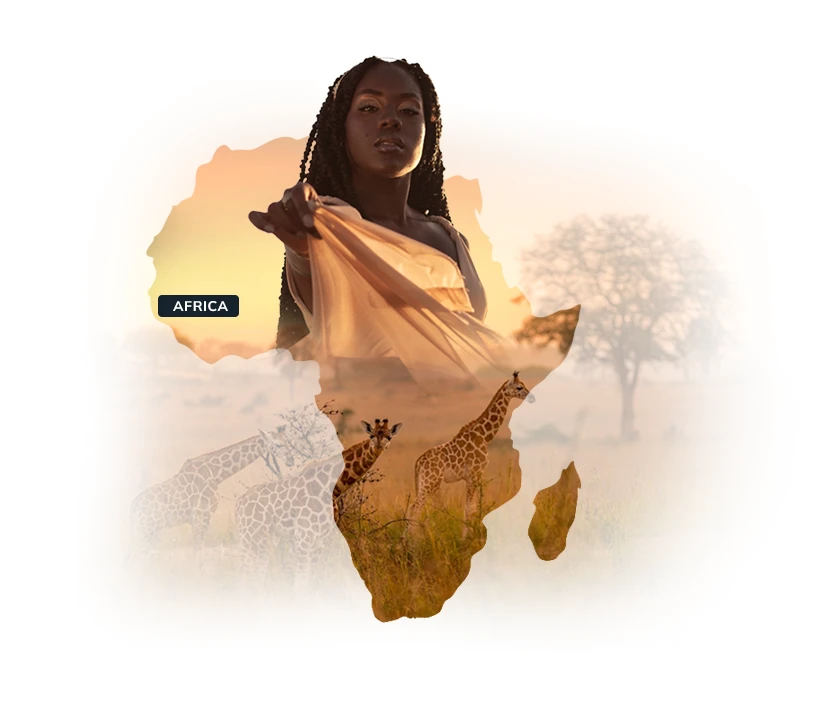


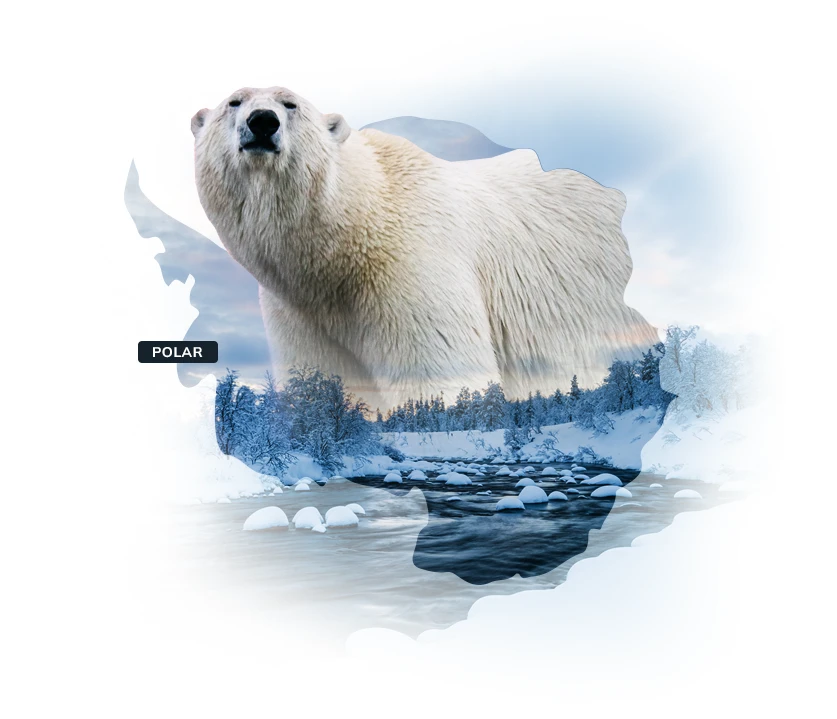







.webp?width=1000&height=668&name=manyara-ranch-conservancy-lake-manyara%20(1).webp)
